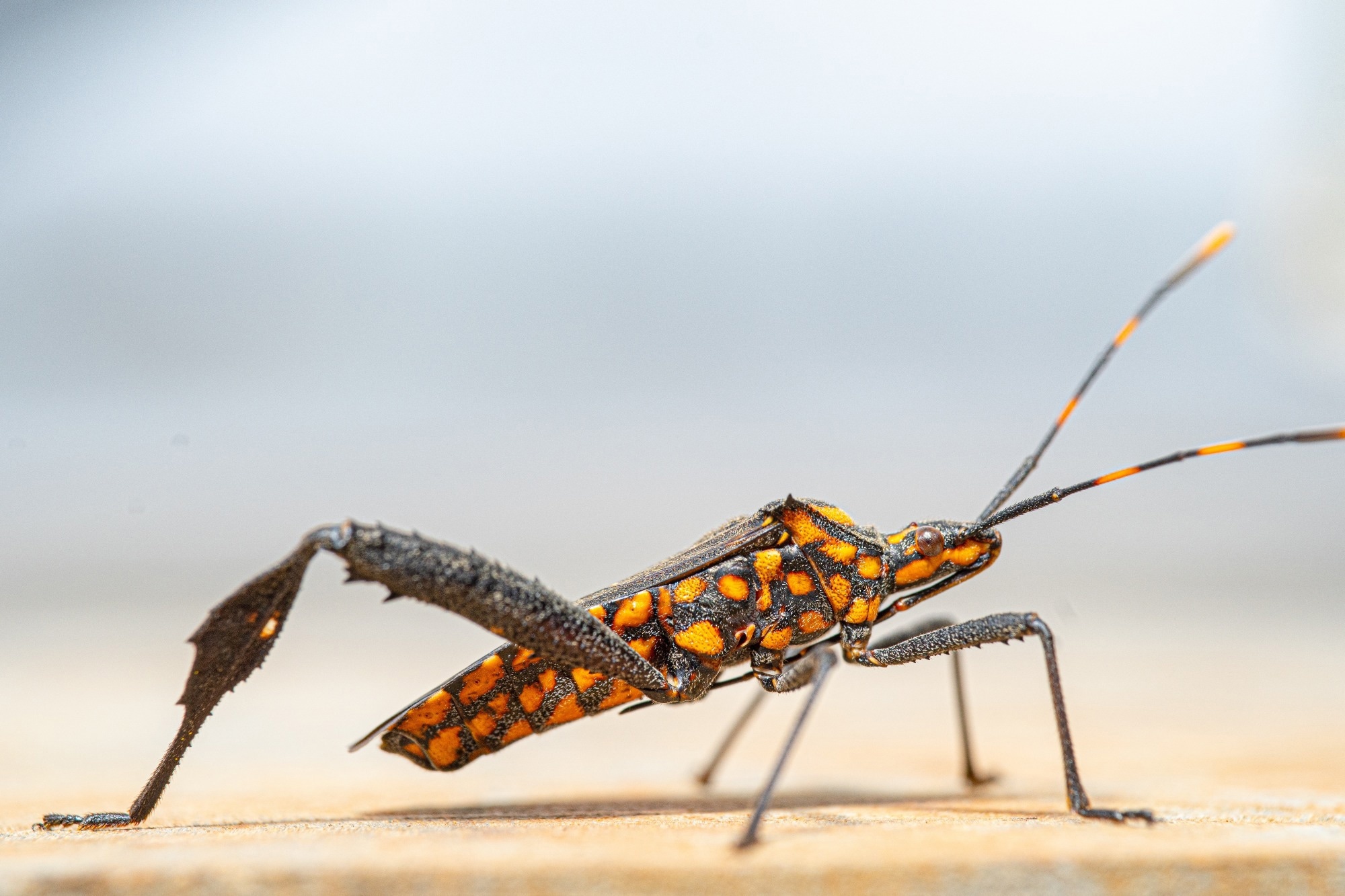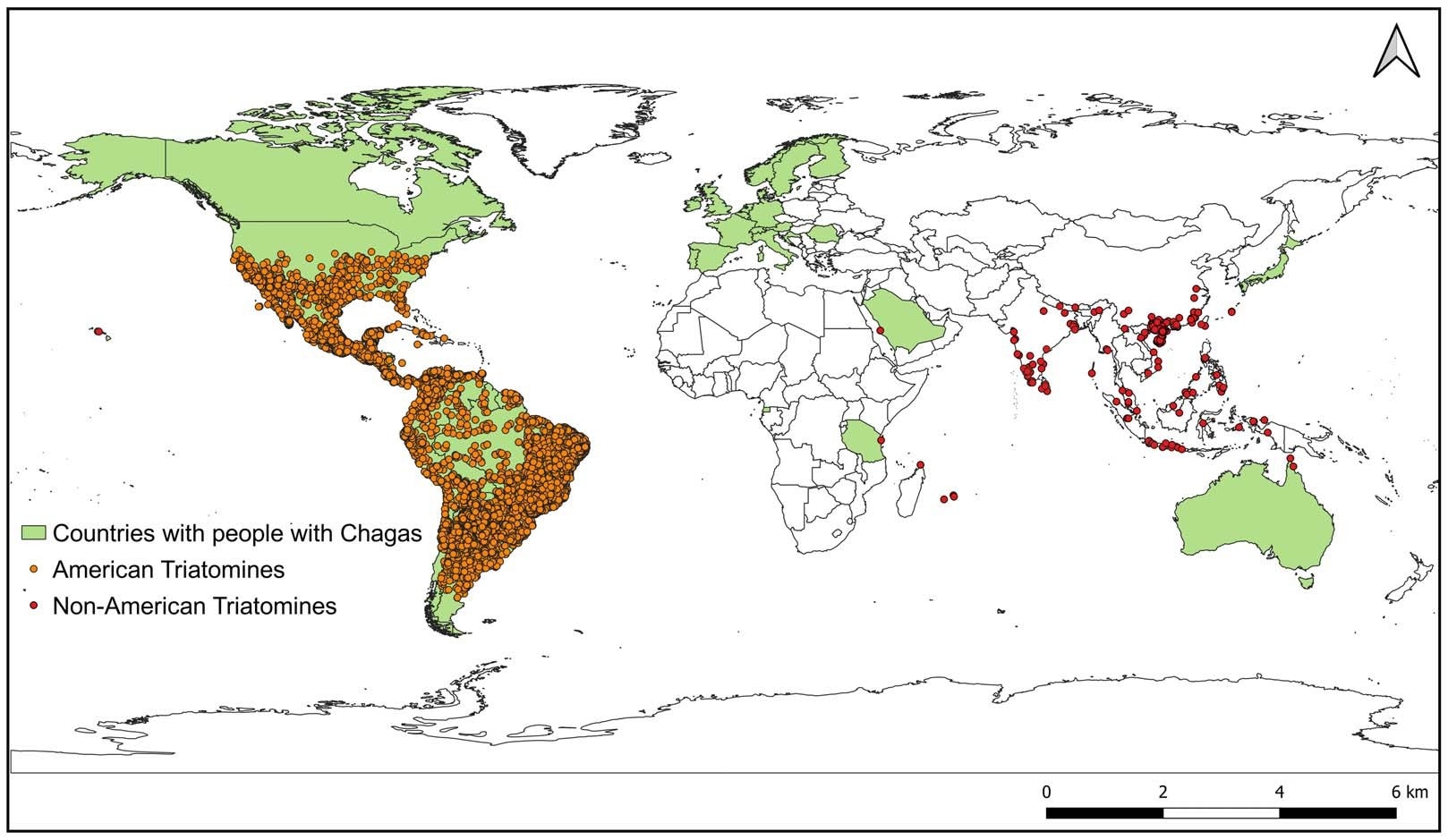A groundbreaking dataset charts the distribution of kissing bug species across three continents, providing public health officials with the insights needed to prevent new Chagas disease outbreaks.

Data release: Triatomines outside the Americas: a comprehensive dataset for the global surveillance of Chagas disease vectors. Image Credit: Oktavianus Mulyadi / Shutterstock
In a recent study published in the journal Gigabyte, researchers investigated, collated, and synthesized the first comprehensive dataset tracking the global distribution of non-American populations of 16 species of "kissing bugs" (triatomine bugs), the neglected vectors of Chagas disease.
The compiled resource details the locations of these bugs across Africa, Asia, and Oceania, based on nearly a century of records, providing a critical tool for international surveillance and helping public health officials assess and manage the risk of local Chagas transmission worldwide.
Background
Chagas disease ("American trypanosomiasis") is a tropical parasitic illness caused by the Trypanosoma cruzi parasite, characterized by mild, flu-like, or unnoticeable symptoms (acute phase) followed by potentially fatal damage to the heart and digestive system (chronic phase) years later.
Traditionally restricted to Latin America, the global dispersal of the parasite through anthropogenic transfer (human migration) is raising substantial concerns about potential global outbreaks across virtually every continent. Chagas disease is primarily transmitted through contact with the feces of infected insects known as triatomine bugs, which acquire the parasite by biting an infected human.
Global outbreak fears centre around the following scenario: if an infected person settles in a region where native kissing bugs exist, those local insects could bite the patient, become infected themselves, and establish a brand-new cycle of transmission far from the disease's native American origin.
Unfortunately, while enhanced surveillance may have prevented local disease outbreaks, a persistent lack of a clear, consolidated map of where these potential vectors exist in Africa, Asia, and Oceania has hampered vector monitoring efforts.

Global distribution of people with Chagas disease and triatomine vectors. Green polygons indicate countries with people infected with Trypanosoma cruzi, according to the latest official estimates (2018). Orange dots represent records of American triatomine speciesand red dots represent non-American triatomine species
About the Study
The present study aims to address this knowledge gap and inform public health efforts by consolidating nearly a century of sightings of 16 species from the genera Triatoma and Linshcosteus outside their native American range.
The dataset comprised records collected between 1926 and 2022, acquired from scientific publications, museum collections, and public biodiversity databases (n = 7: BioOne, PLoS, Google Scholar, ScienceDirect, Wiley, PubMed, and Scielo), as well as citizen-science platforms such as iNaturalist/GBIF. The dataset further incorporated unpublished data from collaborators, providing the most up-to-date information possible.
All records were subjected to a rigorous and meticulous screening and verification process, with all included datapoints cleaned for errors and georeferenced using Google Earth (assigned precise geographic latitude and longitude coordinates). Darwin Core terms were leveraged to collate and synthesize per-sample metadata (n = 6), including specimen identifiers, systematic information, geographical information, temporal information, sampling notes, and individual details.
Study Findings
The present work's final product (novel database) is a robust and open-access dataset containing 396 verified records for 16 different species of kissing bugs. It provides the most accurate map to date of these potential Chagas vectors across 34 countries and overseas territories in Africa, Asia, and Oceania.
Possibly the most significant study finding concerns Triatoma rubrofasciata, a highly adaptable generalist species that accounts for 317 of the 396 included records. Historically associated with coastal port cities (likely due to anthropogenic transport via ships), the study reveals that this bug has established populations hundreds of kilometers inland in countries such as China, India, and Vietnam, vastly expanding its known territory and potential to transmit Chagas disease.
The present study also includes the first-ever public geographical records for two newly described species, Triatoma atrata and Triatoma picta, both of which occur in China. For many other species, the present dataset provides the first scientific confirmation of species presence in a particular region in more than 50 years, replacing vague historical notes with concrete, verified, and modern evidence.
Notably, despite the dataset spanning 1926 through 2022, over 95% of the records for the widespread T. rubrofasciata have been collected in just the last 10 years, highlighting the power of modern data collection and the alarming, human-mediated spread of this Chagas disease vector.
The authors also emphasize that about 27% of the records lacked collection dates, around 7% lacked geographic coordinates, and most records came from domiciliary or peridomiciliary habitats, highlighting potential data biases that should be considered in future analyses.
They further note that a historical record of T. rubrofasciata from Spain was excluded due to uncertain geographic information, highlighting the risk of passive transport and the need for careful validation.
Conclusions
The present study provides the first comprehensive catalogue of non-American kissing bugs, offering public health officials and government agencies the information necessary to perform accurate risk assessments and design targeted vector control strategies. It complements existing American and Argentinean triatomine datasets as part of an integrated global surveillance framework.
As Chagas disease continues its silent spread across continents, knowing where its vectors live is the first and most critical step in preventing new, localized outbreaks.
Journal reference:
- Ceccarelli, S., Vicente, M. E., Liu, Q., Zhou, X.-N., Wu, D., Balsalobre, A., Bruno, E. A., Barboza, S. E., Valente, R., & Marti, G. A. (2025). Triatomines outside the Americas: a comprehensive dataset for the global surveillance of Chagas disease vectors. Gigabyte, 2025. DOI – 10.46471/gigabyte.163, https://gigabytejournal.com/articles/163